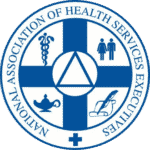Hiring and changing jobs can be particularly stressful in the healthcare field. Every hiring team is well aware of the shortages of key providers they’re facing. Once a candidate has moved through sourcing, interviews, and reference checks, it’s finally time to extend an offer. Here’s how to “close the deal,” with a conditional offer of employment.
Understanding the Conditional Offer in Healthcare
Thoroughly vetting the employment offer is an important step in the closing process. You want to be sure there are no misunderstandings between the administrator or clinical provider and the healthcare organization making the offer. A legal review of all the hiring documentation will ensure compliance with local, state, and federal regulations while also making sure the candidate fully understands compensation, time off, benefits, and overall responsibilities of the role.
The conditional offer typically includes the following steps:
- A verbal presentation from the recruiter is the first step toward getting your chosen candidate on the team. The recruiter is trained to set expectations early in the recruitment process and “pre-close,” that is, prequalify that the candidate is leaning toward accepting the position if the terms are acceptable.
- The salary and benefits discussion and negotiation should be nailed down during this time, before a formal written offer is made. Neither candidate or organization wants to have drawn out or multiple conversations about deal points that already have expectations from both sides.
- A formal conditional letter for employment typically goes to the recruiter to be presented by the recruiter on behalf of the organization at that time. These documents should clearly define the “at-will” status of their position. It should also include:
- A welcome statement confirming the verbal acceptance of the offer.
- The title and status of the role (full, contract, or part-time, exempt or non-exempt)
- The salary or hourly wage with pay periods.
- The expected schedule of “normal workdays and hours”.
- Benefits and eligibility. This could include medical and dental, disability, life, educational assistance, and more.
- Information on the paid leave policy for vacation, holiday, and sick time.
- A reminder that employment is at-will along with the terms of the employment contingencies, such as a background check, and OIG search, drug testing, completion of the I-9, or anything else the employer requires, such as proof of immunizations and licenses.
Once the offer is accepted, signed and returned, you know that this important step has been completed and that you are now transitioning to the onboarding part of the process.
Hiring Tips to Close the Deal
Make sure these candidates are fully vetted in face-to-face or virtual meetings with a panel or at least key members from within the organization. These participants should have or be provided with a series of questions designed to show how the candidate applied their expertise in their prior work or residency environments and how those experiences and skills will transfer to the new position.
Understand that all hiring managers want choices. No one wants to settle. However, in this candidate-driven market, speed is also important. If there are any gaps in a candidate’s background, know what you can train to and know what you can’t. A candidate with most everything needed may just be the best candidate available.
For hiring teams, it is always desirable to have a back-up candidate or two in case this process goes awry. One common mistake we see is stepping away from the search process once an offer has been made. Constant communication during the onboarding period is critical to maintaining the integrity of the hire. Keep the existing candidate pool open in order to have additional selections available—just in case. Once the final paperwork is signed, you are free to notify all of the remaining candidates that the position has been filled.
UHC Solutions works with community healthcare providers and FQHCs to help them find the right talent. We are experts in matching the best opportunities in the community health space with top talent. Call on our team and see how we can help.









